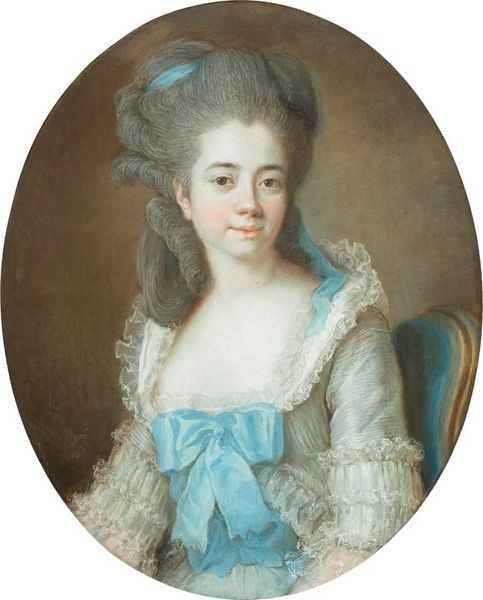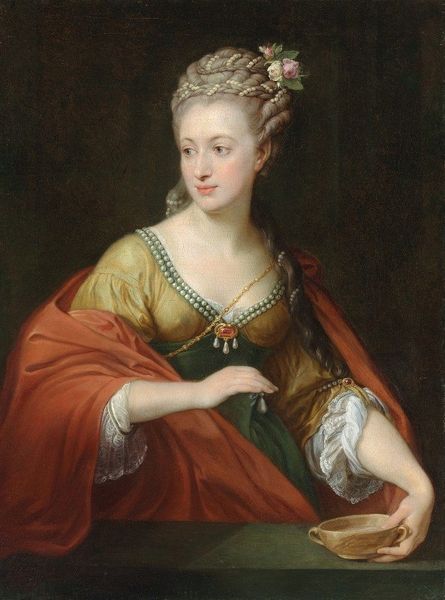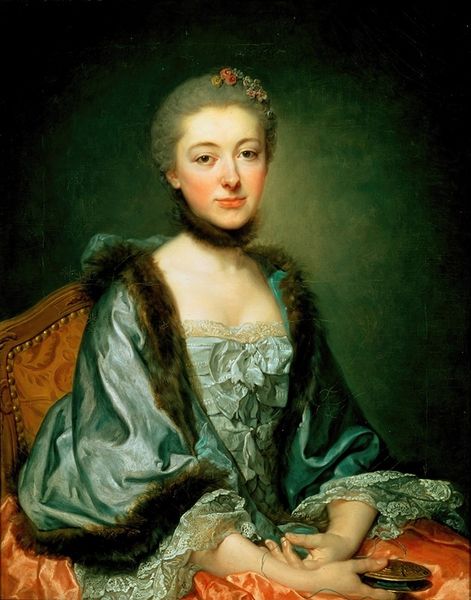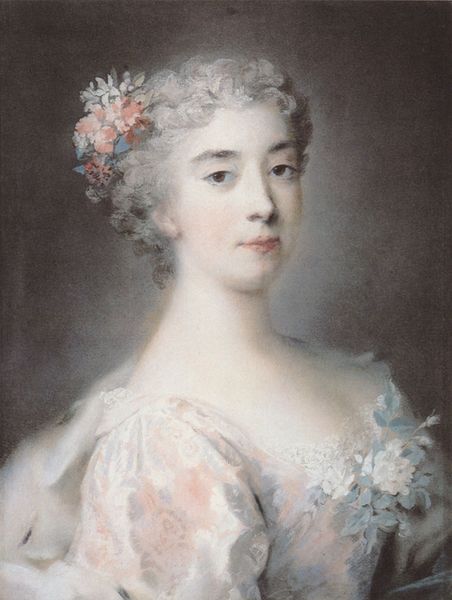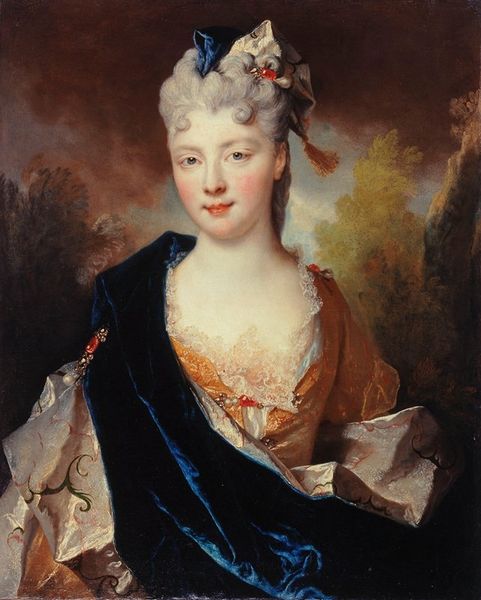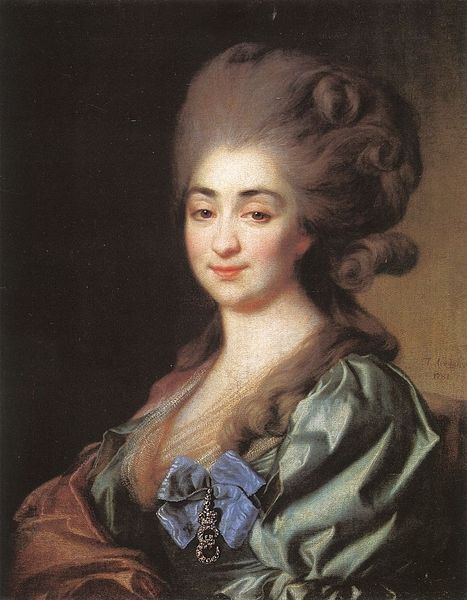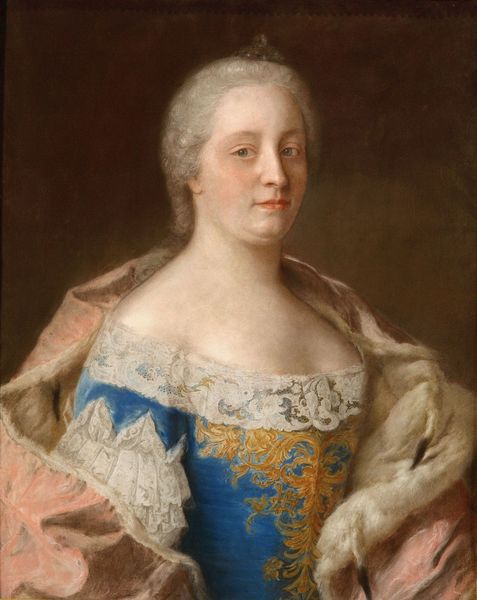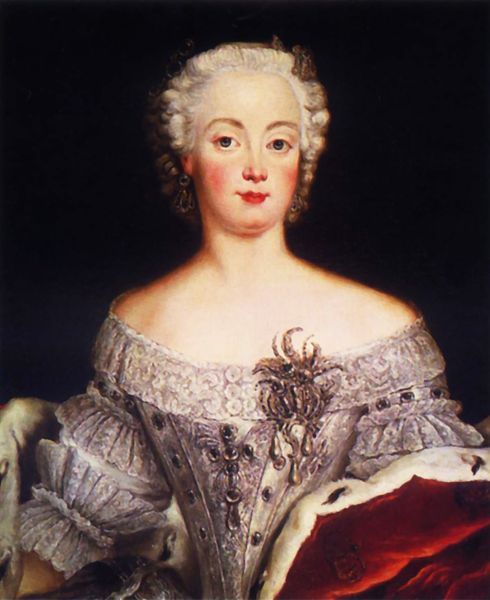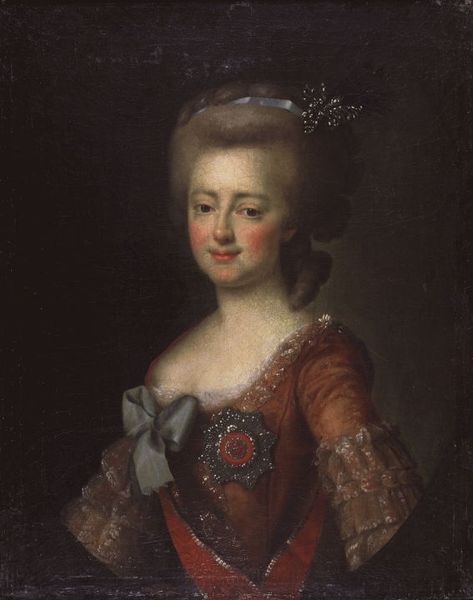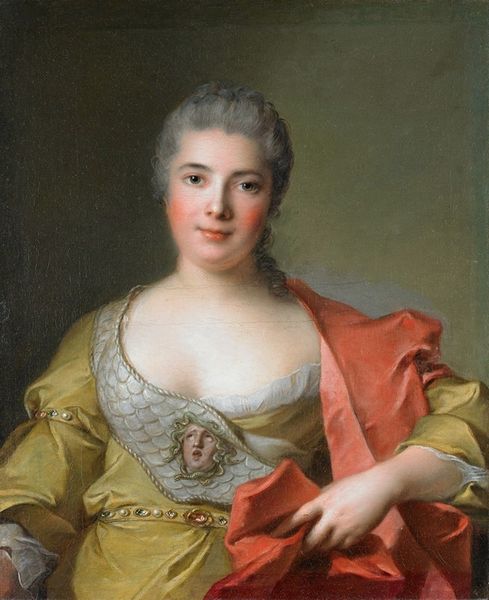
Portrait d’Anne-Thérèse de Marguenat de Courcelles, marquise de Lambert 1710
0:00
0:00
Copyright: Public Domain: Artvee
Curator: What immediately strikes me about this portrait is the sense of contained power, that elegant yet subtly knowing gaze. Editor: Yes, there's a formality, but also a deep, unspoken understanding. Let's delve into the painting a bit. This is "Portrait d’Anne-Thérèse de Marguenat de Courcelles, marquise de Lambert," created around 1710 by Nicolas de Largillière. Painted with oils, this piece showcases a woman of influence during the French Baroque period. Curator: The blue of her robe is so rich. Blue traditionally signals nobility, and here it wraps around her like a mantle of authority, even intelligence. Editor: Precisely. Beyond her attire, we have the intriguing figure of Anne-Thérèse herself, a salonnière who fostered intellectual discussion during a pivotal era. She provided spaces for conversation, which wasn't typical for women. This portrait therefore goes beyond mere aesthetics, becoming a marker of societal evolution. Curator: Her gaze feels both inviting and reserved. It reflects her social position but also perhaps hints at her interior life, the complexities of navigating a patriarchal society while wielding significant intellectual influence. What are your impressions of how she presents herself through symbolic items of adornment? Editor: There's a softness in the pearl brooch and her powdered wig. These convey an era, a world of courtly manners, and sophisticated debate. However, the painter focuses on this woman’s insightful glance. Even now, it radiates self-determination and intellect, speaking volumes about her character. Curator: It's interesting how Largillière balances the opulence of Baroque portraiture with a certain restraint. This makes the painting feel like more than just a display of wealth; it becomes a testament to a woman's intellect. Editor: In studying portraits such as this, we are drawn back to explore identity in a very visually descriptive manner. This image certainly embodies how art carries and perpetuates profound narratives of cultural memory. Curator: It's remarkable how a single portrait can encapsulate so much about the historical context and the individual's agency within it. A beautiful point of convergence for understanding the period, don’t you think? Editor: Indeed. It reminds us that visual legacies contain many complex, layered stories and echoes for ongoing discovery.
Comments
No comments
Be the first to comment and join the conversation on the ultimate creative platform.

